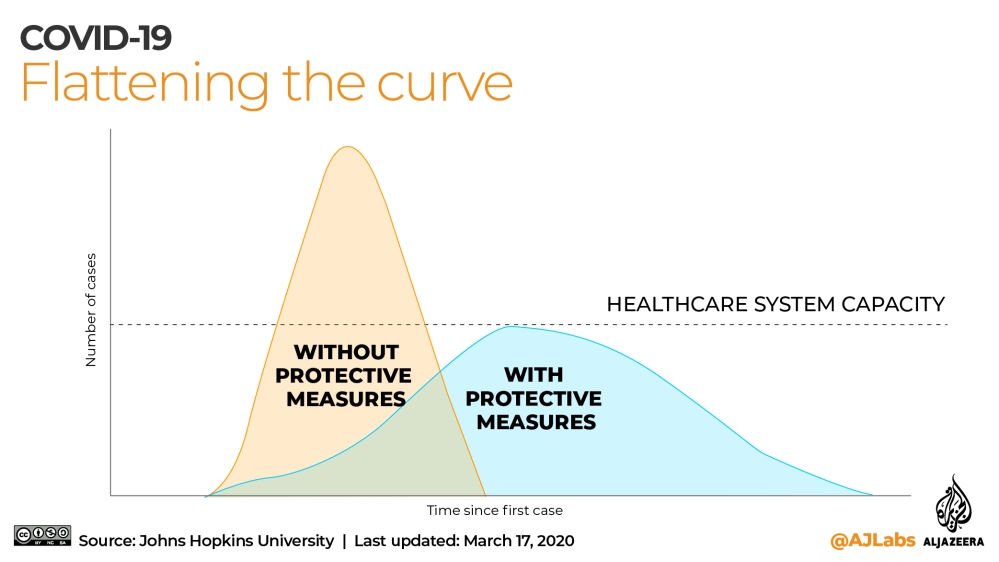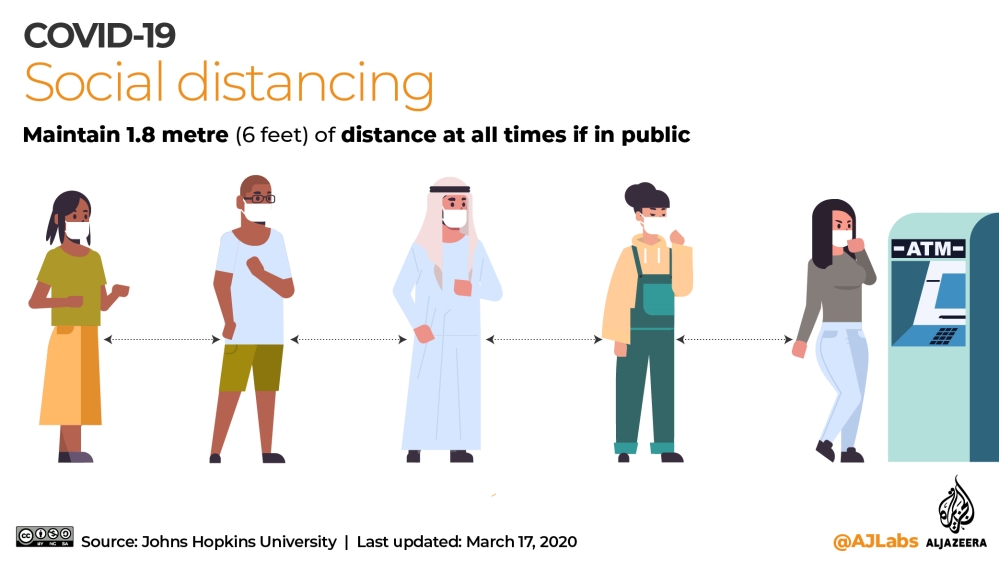My gym is closed: What can I do?
If you live in one of the 170 or so countries affected by the novel coronavirus, it is safe to assume that your local gym or fitness studio has shut its doors.But that should not stop you from continuing with your routine - or starting fresh - and exercising your mind and body.
Instructors worldwide have asked that people put aside their usual concern with restricted space to readjust and make the most out of their living rooms. Here are five home workouts to do under a lockdown.
Jumping jacks
Jumping jacks are a great way to warm up before you get into serious business. Spread your legs and shoulders apart as you jump.They are relatively safe although you might want to keep a safe distance between you and others.
Pushups
This one is a no-brainer but you still have to make sure your posture is correct to reap the most benefits and avoid injury.And for that, your shoulders, spine and hips should all align. You can do as many repetitions as you like - and if that is not challenging enough, extend your hands a little further every time to hit different muscle groups.
Sit-ups
Doing sit-ups is a great way to strengthen your core. Performing a proper sit-up is as easy as lying on your back, crossing your hands and placing them behind your back, bending your knees and moving your chin towards your knees.Bodyweight squats
Also known as weightless squats, this all-around exercise helps you strengthen just about everything that is below your belt.Just place your hands behind your neck, align your shoulders and knees with your feet slightly turned outwards and slowly go down. You can use a chair if you find the movement challenging.
Single leg jumps
Why should you do a single leg jump as opposed to two? Well, jumping on a single leg helps event out or correct any muscle imbalance.It also helps improve reactivity, coordination and acceleration, to name but a few. As its name may suggest, you can do a one-legged jump by placing your knee slightly ahead of your foot and using the opposite side of your body for momentum by slightly tilting back before you begin.
How serious is SARS-Cov-2?
SARS-CoV-2 is the name given the novel coronavirus; the disease it causes is known as COVID-19.According to the WHO, the new coronavirus so far has an average R0 (contagion metric) between 2 and 2.5, which means an infected person can pass it on to more than two people.
This makes it more contagious than seasonal flu (R0 1.3), H1N1 - which has an R0 between 1.2 and 1.6 - and Ebola with R0 of 1.6 to 2.
But it is less contagious than SARS, which was passed on to up to four people or MERS, which had a transmission rate between 2.5 and 7.2 in some places.
Several variables can decide whether someone will make another person sick, including the way it is transmitted (through the air or in bodily fluids); whether a pathogen is contagious during its incubation period; how long that incubation period lasts; and how many people the average patient has contact with.
How to protect yourself
There are several directives given by health organisations to stay safe. They include:- Washing your hands frequently and thoroughly with soap;
- Covering your face when you cough or sneeze, either with a tissue that you immediately dispose of, or with your elbow;
- Avoiding touching your eyes, nose and mouth;
- Cleaning surfaces and objects you touch often;
- Avoiding direct contact with live animals in affected areas.
Scientists doubt the effectiveness of face masks in protecting a healthy person from airborne viruses, saying they are more useful in keeping an infected person from affecting others.
More countries are advising people to self-quarantine for at least two weeks while implementing a series of sweeping "social distancing" measures, including banning public gatherings and shutting down schools.
Social distancing aims to slow the spread of the virus, giving global health systems more time to care for patients who need help, which is also known as "flattening the curve".
It is most effective when used against infections that can be transmitted via droplet contact (coughing or sneezing), which is the case with the coronavirus.
Cancellation of public events that draw large crowds, such as sporting events and music festivals, is an essential part of social distancing, but avoiding smaller gatherings is equally important, according to Johns Hopkins University.
When you are in any kind of gathering or at a service provider, it is important to stay at least 1.8 metres (six feet) away from anyone around you.
Other social distancing techniques are working from home instead of at the office, e-learning instead of going to school, and visiting loved ones via electronic devices instead of in person.
Symptoms and what to do if you think you caught it
According to the WHO, the most common symptoms of COVID-19 are fever, fatigue and a dry cough. Some patients may experience aches and pains, nasal congestion, a runny nose, sore throat or diarrhoea.Current estimates of the incubation period - the amount of time between infection and the onset of symptoms - range from one to 14 days. Most infected people show symptoms within five to six days.
However, infected patients can also be asymptomatic, not displaying symptoms despite having the virus in their system.
The elderly, those with underlying medical conditions - such as high blood pressure, heart problems or diabetes - and those who are immunocompromised, are more likely to develop serious illness.
Read more on what the coronavirus does to your body if you catch it.
Many countries have set up dedicated hotlines for people who suspect they have been infected.
People are asked to contact the hotline before going to a hospital to avoid the possibility of spreading the virus in an unprepared healthcare facility or on the way there.
Contact specialised help as soon as you suspect you are ill and limit contact with others as much as possible.
To date, there is no vaccine and no medicine for COVID-19. While some traditional or home remedies can provide comfort and alleviate symptoms of the disease, there is no proof that existing medicine can prevent or cure it, according to the WHO.








No comments:
Post a Comment